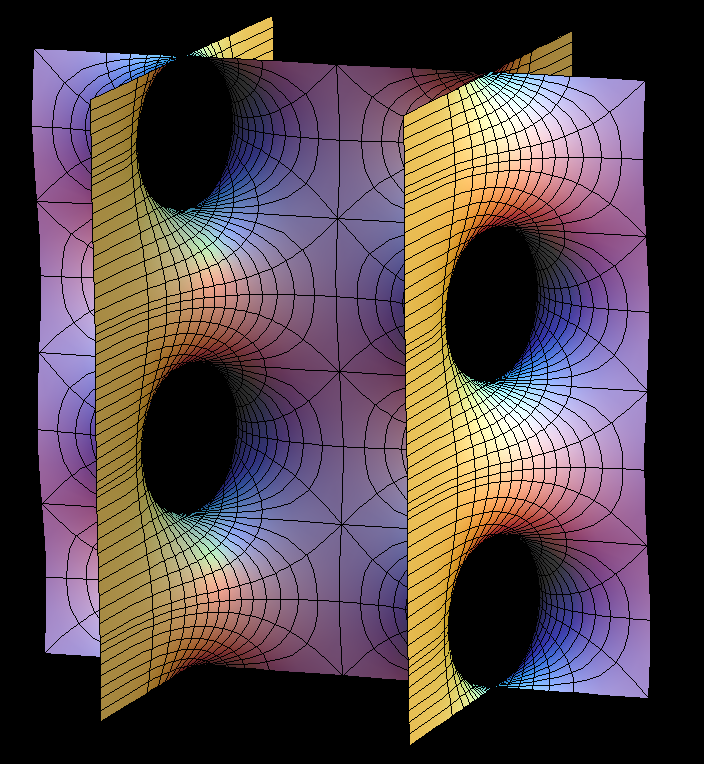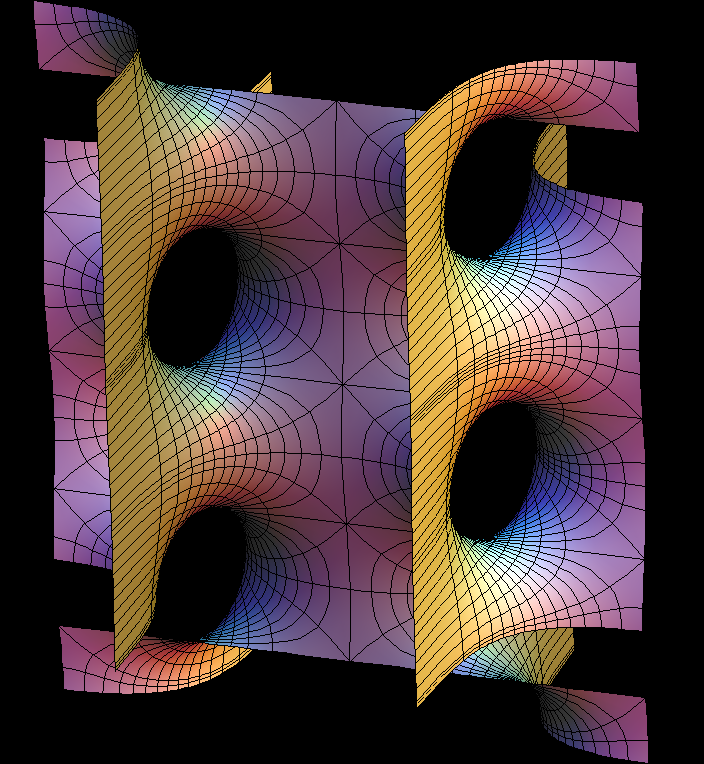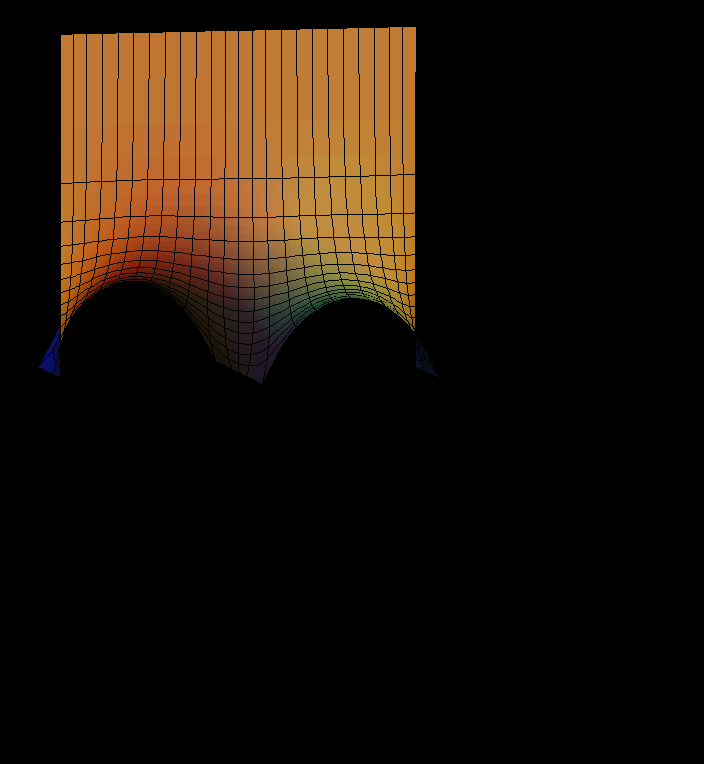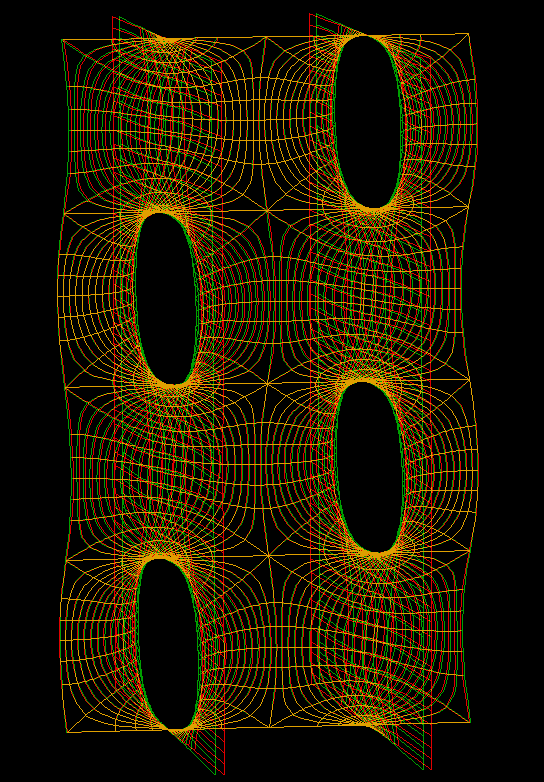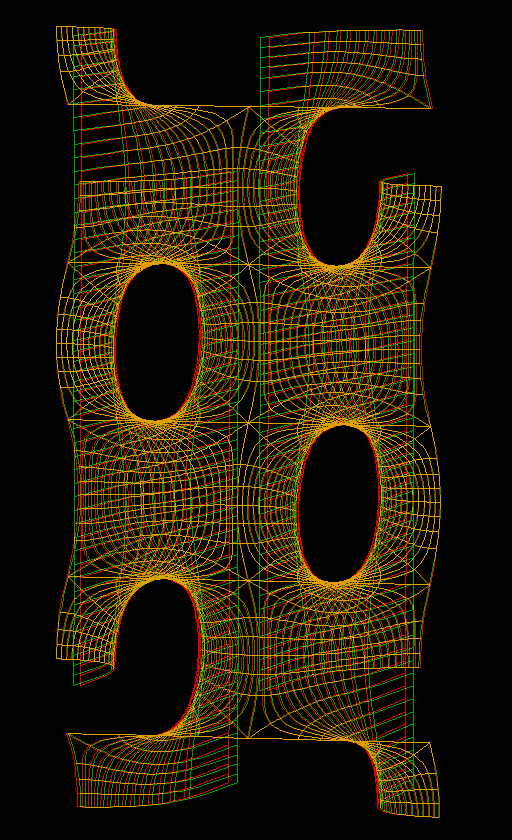These families are parametrized by 4-punctured rectangular
tori; they and their conjugates are embedded. We therefore
suggest the associate family morphing, and also morphing of
the modulus, bb, (0 < bb < 0.5) of the rectangular Torus,
which changes the size of the visible holes.
For the visual appearance of these surfaces it is particularly
important that the punctures are centers of polar coordinate lines.
Formulas are taken from [K1] or [K2]. The Gauss maps for these
surfaces are degree 2 elliptic functions. The cases shown are
particularly symmetric, the zeros and poles of the Gauss map
are half-period points and the punctures are there. In the Jd-case
the diagonal of the rectangular fundamental domain joins the two
zeros, and in the Je-case it joins a zero and a pole of the Gauss map.
Under suitable choices of the modulus of the Torus these
surfaces look like a fence of Scherk
Saddle Towers
- with
a vertical straight line (Je), respectively a planar symmetry
line (Jd), separating these towers. The conjugate surfaces
look qualitatively the same in the Jd-cases and like a
checkerboard array of horizontal handles between vertical
planes in the Je-cases.
- [K1] H. Karcher, Embedded minimal surfaces derived from Scherk's examples, Manuscripta Math. 62 (1988) pp. 83--114.
- [K2] Construction of Minimal Surfaces, H Karcher , in “Surveys in Geometry”, Univ. of Tokyo, 1989, and Lecture Notes No. 12, SFB 256, Bonn, 1989, pp. 1 — 96.
For a discussion of techniques for creating minimal surfaces with various qualitative features by appropriate choices of Weierstrass data, see either [KWH], or pages 192--217 of [DHKW].
- [KWH] H. Karcher, F. Wei, and D. Hoffman, The genus one helicoid, and the minimal surfaces that led to its discovery, in “Global Analysis in Modern Mathematics, A Symposium in Honor of Richard Palais' Sixtieth Birthday”, K. Uhlenbeck Editor, Publish or Perish Press, 1993
- [DHKW] U. Dierkes, S. Hildebrand, A. Kuster, and O. Wohlrab, Minimal Surfaces I, Grundlehren der math. Wiss. v. 295 Springer-Verlag, 1991
